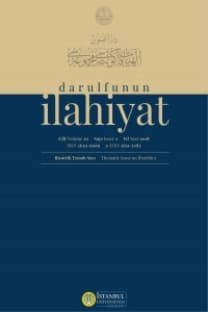Book Review: Salem, Feryal. The Emergence of Early Sufi Piety and Sunnī Scholasticism: ʿAbdallāh b. al-Mubārak and the Formation of Sunnī Identity in the Second Islamic Century (Brill, 2016). ISBN: 9789004310292, 166 pages
This is a book review of Feryal Salem's book which is titled The Emergence of Early Sufi Piety and Sunnī Scholasticism: ʿAbdallāh b. al-Mubārak and the Formation of Sunnī Identity in the Second Islamic Century, and which was published by Brill in 2016 as a part of the series on Islamic History and Civilization: Studies and Texts. The book under review is a monograph in which the author focuses on Abdallāh b. Al Mubārak in order to shed more light on the developments of the Second Islamic Century. The first three hundred years are often considered to be the formation people of the Islamic civilization, not only in terms of political conquests and geographical expansion, but also in terms of socio-economic and intellectual developments. One of the broadest appearing categories is perhaps the Sunnī Vs Shi’ī divide, whose main elements started to appear, but neither of which was crystallized as yet. The Shi’ī identity is beyond the scope of this study since the author explicitly focused on the Sunnī identity. More specifically, she focused on three main points, namely zuhd, hadīth, and jihad, with the aim of better understanding how they were viewed, formulated, and practiced in the early years of the Islamic civilization.
Book Review: Salem, Feryal. The Emergence of Early Sufi Piety and Sunnī Scholasticism: ʿAbdallāh b. al-Mubārak and the Formation of Sunnī Identity in the Second Islamic Century (Brill, 2016). ISBN: 9789004310292, 166 pages
This is a book review of Feryal Salem's book which is titled The Emergence of Early Sufi Piety and Sunnī Scholasticism: ʿAbdallāh b. al-Mubārak and the Formation of Sunnī Identity in the Second Islamic Century, and which was published by Brill in 2016 as a part of the series on Islamic History and Civilization: Studies and Texts. The book under review is a monograph in which the author focuses on Abdallāh b. Al Mubārak in order to shed more light on the developments of the Second Islamic Century. The first three hundred years are often considered to be the formation people of the Islamic civilization, not only in terms of political conquests and geographical expansion, but also in terms of socio-economic and intellectual developments. One of the broadest appearing categories is perhaps the Sunnī Vs Shi’ī divide, whose main elements started to appear, but neither of which was crystallized as yet. The Shi’ī identity is beyond the scope of this study since the author explicitly focused on the Sunnī identity. More specifically, she focused on three main points, namely zuhd, hadīth, and jihad, with the aim of better understanding how they were viewed, formulated, and practiced in the early years of the Islamic civilization.
